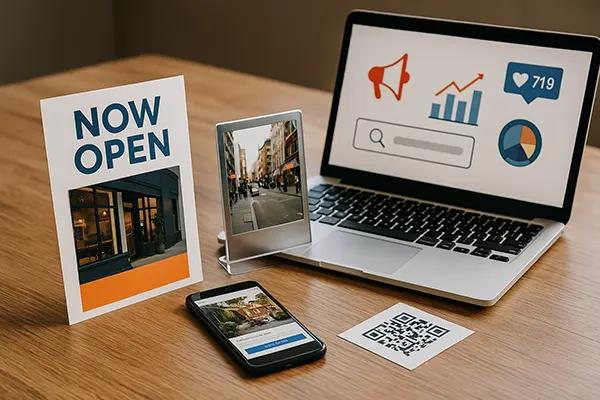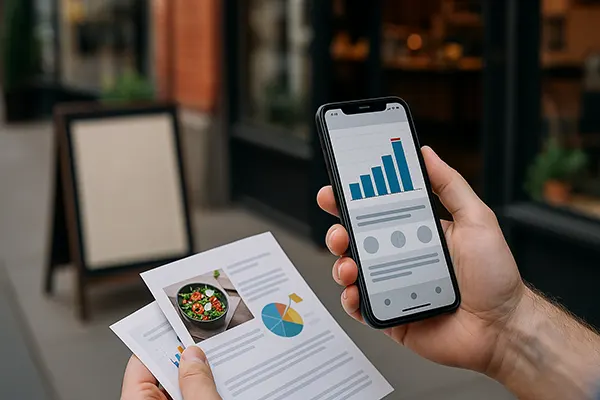
How to Combine Offline Advertising with Digital Marketing for Local Business
In today’s competitive environment, local businesses need to be present both online and offline to reach their full potential. While digital marketing offers precision and measurable results, offline advertising remains a powerful tool for brand visibility within communities. When combined strategically, these channels create a cohesive marketing ecosystem that enhances trust, drives engagement, and ultimately increases sales.
Benefits of Integrating Offline and Online Marketing
Combining offline and online efforts allows local businesses to reinforce their messaging across multiple touchpoints. A customer who sees a billboard or receives a flyer is more likely to remember your brand when they later see your social media ad. This synergy significantly boosts brand recall and encourages action from potential customers who need multiple exposures before making a decision.
Offline events, such as sponsorships or local fairs, can generate content for online platforms. Businesses can share event photos, videos, and testimonials on their websites and social media, turning an offline activity into digital proof of community engagement. This also creates opportunities for user-generated content and word-of-mouth marketing.
Moreover, integrated campaigns allow better targeting. Using tools like QR codes on printed materials or personalised URLs can help track offline efforts in the digital sphere. This makes it possible to analyse the effectiveness of a traditionally “unmeasurable” channel and understand customer journeys more accurately.
Building Consistency Across Channels
For an integrated strategy to succeed, businesses must ensure consistency in branding, messaging, and tone across all channels. Whether a customer sees your brand on a street banner or a Facebook ad, the visuals, fonts, colours, and slogans should be recognisable. Inconsistencies confuse audiences and diminish brand trust.
Digital assets, such as email templates or social media posts, should reflect the same values and identity as physical materials like brochures or posters. When the online and offline worlds are visually aligned, customers perceive the business as more professional and reliable, which increases the likelihood of engagement and repeat visits.
Furthermore, synchronising your marketing calendar helps create consistent touchpoints. For example, a seasonal promotion launched in-store should simultaneously appear on your website, in your email newsletter, and across all social media profiles to ensure maximum reach and effect.
Effective Tools for Bridging the Gap
One of the most practical tools for connecting offline and digital marketing is the QR code. These can be added to print ads, receipts, or packaging, directing customers to websites, surveys, promotions, or loyalty programmes. In 2025, QR adoption remains high across Europe, making them a valuable asset for local campaigns.
Another useful tactic is the use of branded hashtags. Encouraging customers to post their experiences with your brand using a specific hashtag creates a link between their offline interaction (e.g., visiting your store) and your online presence. This also fosters a sense of community and trust among local audiences.
Additionally, local SEO strategies can be enhanced by offline data. Collecting customer reviews during face-to-face interactions and encouraging them to be posted online helps strengthen your presence in Google’s local pack. This hybrid method ensures your business is discovered by nearby users searching on mobile devices.
Tracking Results and ROI
Measuring the success of an integrated campaign is essential to understand what works. Unique discount codes or URLs printed on offline materials can be used to trace conversion rates and customer behaviour once they transition online. This bridges the analytics gap between the physical and digital worlds.
Modern CRMs and marketing automation tools now allow businesses to segment audiences based on both online and offline interactions. For example, a customer who visited a pop-up store and subscribed to a mailing list can later be retargeted with relevant ads on social media or email campaigns, increasing personalisation and conversion potential.
Business owners should routinely analyse their data to refine strategies. Look at which offline touchpoints result in the most online activity, and adjust accordingly. Over time, this approach leads to more cost-effective marketing and a deeper understanding of the local audience’s behaviour.

Best Practices for Local Businesses in 2025
In 2025, authenticity remains a key factor in successful marketing. Local businesses that maintain a genuine connection to their communities are more likely to thrive. Featuring local stories, faces, and events in both online and offline campaigns enhances credibility and emotional connection.
Staff training is also important. Ensure your employees are aware of ongoing digital campaigns so they can reference them in-store, and vice versa. This makes the customer experience seamless and reinforces the campaign message at every point of contact.
Finally, avoid siloed marketing efforts. Your online team should collaborate with those handling offline promotions to ensure strategic alignment. This may require regular planning meetings, shared data access, and unified campaign goals. When both arms of your marketing are working together, results tend to compound.
Adapting to Future Trends
Looking ahead, technologies like augmented reality (AR) are beginning to merge the physical and digital worlds even further. Local businesses could adopt AR tools for interactive in-store experiences that lead directly to digital engagement, such as loyalty rewards or gamified promotions.
Voice search continues to grow in popularity, especially on mobile devices. Integrating this into your local SEO strategy will make your business more accessible when customers use smart speakers or smartphones to find services nearby. Mentioning local landmarks or events in digital content can improve relevance.
Finally, sustainability is influencing consumer choices. Combining digital campaigns with eco-friendly offline practices (like using recycled materials or hosting green events) can resonate strongly with today’s values-driven customers. In 2025, being socially and environmentally conscious is not just a trend—it’s a standard.
